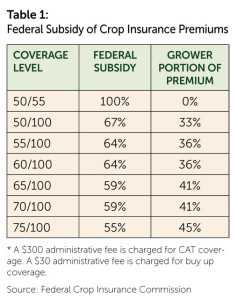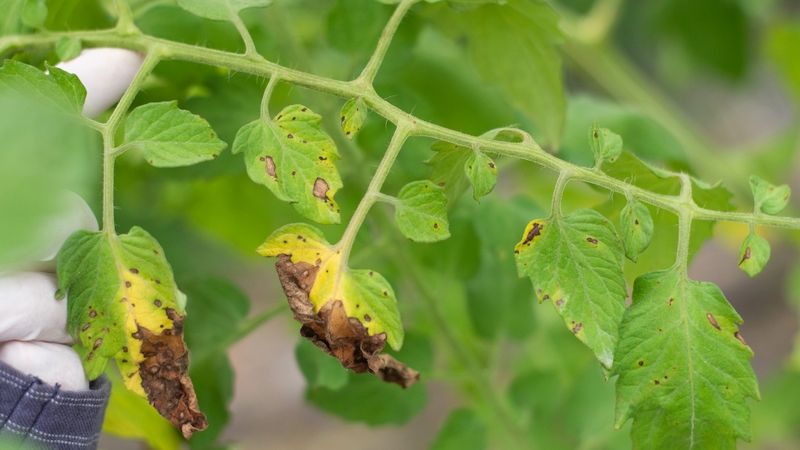USApple Working With Risk Management Agency For New Apple Crop Insurance Pricing
USApple is working closely with USDA’s Risk Management Agency (RMA) on a new methodology for the apple crop insurance policy that will provide growers more flexibility in selecting a level of protection that better suits their particular operation. RMA is creating a methodology for how apple variety groups for crop insurance purposes should be determined, including the threshold for making changes to the varietal groups and how often changes should be made.
USApple’s Risk Management Task Force is providing industry expertise. Under the current fresh apple crop insurance policy, there are only two apple varietal groups, Groups A and B. Group A includes apple varieties such as Braeburn, Cameo, Crispin, Fuji, Gala, Honeycrisp, Jonagold, Macoun, Cripps Pink (Pink Lady), and Sommerfeld. Group B includes all other varieties. To qualify as fresh production for insurance purposes, at least 50% of the production must be sold fresh in one or more of the four most recent crop years. Price elections (the price per bushel of protection that can be chosen by the grower) are set each year.
 Crop Insurance Premiums are subsidized by the federal government. Table 1 (page 2) illustrates the federal subsidy as a percentage of the total premium at various levels of coverage. Apple growers can elect to receive the minimum, referred to as “catastrophic” or “CAT” coverage that covers 50% of the crop at 55% of the price elective and the federal government will pay 100% of the premium — all the grower has to do is sign up for the CAT level of coverage and pay a $300 administrative fee. As the coverage election increases, the percentage of federal subsidy decreases. For example, the highest coverage available is 75/100, or a guarantee of 75% of the grower’s crop at 100% of the price election. At that level, the federal premium subsidy amounts to 55% of the total premium and the grower’s share becomes 45% of the total premium.
Crop Insurance Premiums are subsidized by the federal government. Table 1 (page 2) illustrates the federal subsidy as a percentage of the total premium at various levels of coverage. Apple growers can elect to receive the minimum, referred to as “catastrophic” or “CAT” coverage that covers 50% of the crop at 55% of the price elective and the federal government will pay 100% of the premium — all the grower has to do is sign up for the CAT level of coverage and pay a $300 administrative fee. As the coverage election increases, the percentage of federal subsidy decreases. For example, the highest coverage available is 75/100, or a guarantee of 75% of the grower’s crop at 100% of the price election. At that level, the federal premium subsidy amounts to 55% of the total premium and the grower’s share becomes 45% of the total premium.
The 2014 Farm Bill does not make changes to apple crop insurance programs for 2014. The same programs, specifications, and rates existed before passage exist after passage of the 2014 Farm Bill. Hence, passage of the 2014 Farm Bill will not impact 2014 crop insurance decisions. Furthermore, the 2014 Farm Bill did not change the products or subsidy levels that currently exist. The same Combo and the Area Risk Protection Insurance (ARPI) policies that exist in 2014 will exist in 2015 and onward.

The apple crop insurance policy has been widely accepted by apple growers. Table 2 (see above) illustrates information from the 2013 crop showing that there were 3,292 individual policies in force covering 238,674 acres of production. According to USDA’s National Agricultural Statistics Service (NASS), in 2012 the total number of bearing acres in apple production was 328,000, indicating that 73% of U.S. apple production was covered by crop insurance.
USApple’s Risk Management Task Force is working with RMA on the development of a wider range of variety and price options so growers can better tailor the apple crop insurance coverage to the needs of their individual operations. As noted, there are only two apple varietal groups from which growers can choose price protection. As RMA has indicated, with only two groups, there are likely some varieties in certain locations that may not be receiving a price that appropriately reflects their value to the individual grower. The RMA is looking at creating regional price groups, and adding up to three additional tiers of groups to better reflect the wide range of apple variety values. It will be important under this new system for growers to keep records of production of individual varieties so they will be able to obtain appropriate coverage for the individual varieties.
For more information, click here and click on the state where your operation is located to obtain a policy fact sheet.
This article originally appeared in the Spring 2014 USApple Apple News.









